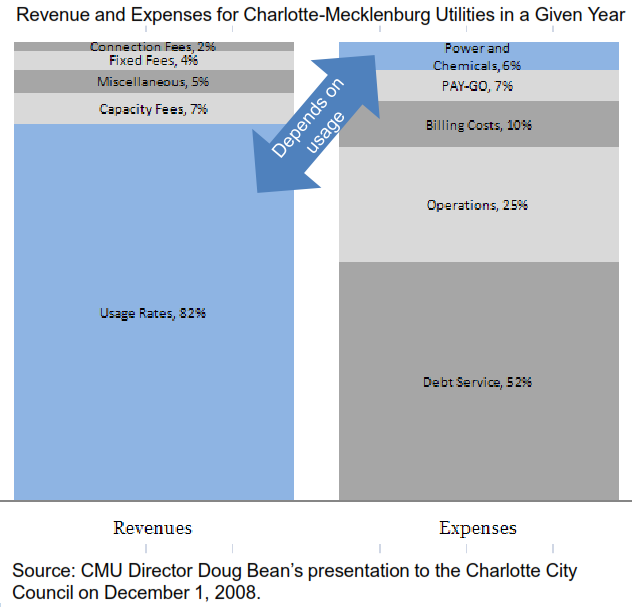Guest author Peiffer Brandt is Chief Operating Officer at Raftelis Financial Consultants.
There is little doubt in the industry that per capita water consumption in the United States is declining. Many water utilities have faced financial challenges due to this national trend, which was highlighted in a 2011 analysis prepared by American Water Works Association. The most important question centers around whether the decline will continue, or whether usage will return to the levels of five or ten years ago. In order to answer that question it is necessary to identify the causes of the decline in consumption.
We believe there are four primary factors that are pushing down consumption:
- Acceptance of conservation ethos;
- Prevalence of more water efficient fixtures and appliances;
- Elasticity impact of increasing water rates; and
- Economic downturn.
Conservation efforts are everywhere. Most cities collect recyclables. Children no longer leave the faucet running when brushing teeth. “Green” is viewed favorably by the majority of the population. This acceptance of conservation has evolved over the past 40 years.
Federal legislation (the Energy Policy Act of 1992, the Energy Policy Act of 2005 and the Energy Independence and Security Act of 2007) have led to requirements that mandate more and more efficient fixtures and appliances. Most homes have reached build-out with respect to fixtures and appliances, so there are not additional fixtures or appliances coming into homes, just replacements, which are likely more efficient than the devices they are replacing.
Water rates have been increasing faster than inflation, which is likely to continue (the 2010 AWWA/RFC Water and Wastewater Rate Survey found that between 1996 and 2010 rates had increased by 4.66%, while the CPI had increased by 2.49%). Regulatory requirements will continue to increase, necessitating additional expenditures by utilities. The federal government is likely to rely on regulation in the form of unfunded mandates, which will force utilities to address rising costs by raising rates. As demonstrated by the following graph, the vast majority of costs for a utility are fixed, so as consumption declines rates need to increase to ensure that enough revenue is recovered, which indicates that declining consumption is self-perpetuating.
The economy has also had an impact on water usage. As household budgets tighten, customers use less non-essential water. Commercial and industrial customers, particularly large water users, have aggressively identified opportunities to reduce usage to reduce costs. For example, Anheuser –Busch has set a goal of reducing worldwide water use by 30%. In Williamsburg, the company has reduced the volume of water needed to produce one barrel of beer from over 6 barrels to 2.3 barrels.
It is unlikely that the conservation ethos, particularly held by the younger generations, will dissipate. Appliances and fixtures will continue to become more efficient and rates will rise. While the economy has historically been cyclical and should rebound, with the other three factors continuing to depress per capita usage, we believe that utilities in the United States are in the midst of a “new normal.” It is unlikely that consumption will return to the levels of five or ten years ago. Though there is a limit to how low per capita usage can go, it is unlikely that the lower limits have been reached, considering how low per capita usage is in certain areas of the United States and around the world.




3 Responses to “Declining Water Consumption, Part Two: The Big Picture”
Sarah Hill
Excellent blog post. It’s an eye opening article. Really informative and knowledgeable. Thanks!! Keep sharing!
Total Water Demand is on the DeclineEnvironmental Finance
[…] of North Carolina. Similar trends have also been identified in other states and across the country, driven by several factors. It turns out; it’s not just average residential water use that is declining. Despite growing […]
Water Rate Increases Among 1,961 Utilities in Six States in the Last Decade « Environmental Finance
[…] revenues consistent with changing (usually rising) costs and to compensate for long-term trends of declining water use. A previous blog post reported that operating expenses were growing faster than operating revenues […]